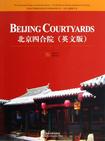北京四合院
出版时间:2012-10 出版社:清华大学出版社 作者:贾珺 页数:278 字数:451000
内容概要
自元代以来,无论是王公大臣、富商巨贾、还是文人学士、普通百姓,都住在大大小小的四合院中。很多人都对四合院有着模糊的印象,但北京四合院的确切定义又是什么?这个问题在本书中,便能够得到满意的答案。
《北京四合院(英文版)》从多维的视角对四合院进行了阐述。开篇对合院住宅的演变,到元大都到明清北京城的四合院,做了概述。四合院的基本格局部分,对四合院进行了类型界定,如四合院的并联组合方式、带花园的四合院,以及四合院的庭院景观。第三部分主要是四合院的建筑构成,包括台基、屋身大木做、外墙、屋顶、外檐内檐、家具陈设等,条理分明,叙述明晰。然后是四合院中正房、厢房等房屋类型的分布,以及居者的身份界定。第五部分则是四合院的建造施工,石作、砖作、瓦作等等,非常详尽。
除此之外,《北京四合院(英文版)》后半部分的篇幅,采用了实例的方式,对四合院的居住文化,予以直观表达。与前文中的理论部分,相辅相成。如清代经典府宅四合院撷英,孚王府、恭王府、崇礼宅、张之洞宅、纪昀宅等。近现代文化名人故居的四合院例说,则选录了鲁迅故居、老舍故居、齐白石故居、梅兰芳故居等。在两部分四合院实例之后,本书又对四合院的文化内涵和生活情韵,如风水禁忌、伦理秩序、雅居生活等方面做了适度探讨。
作者简介
贾珺,1970年出生于江苏淮阴,2001年获得清华大学建筑学院历史与理论专业博卜并留校任教。2006—2007年任罗马人学建筑学院访问学者。现为清华大学建筑学院教授、国家一级注册建筑师、清华人学图书馆建筑分馆馆长、《建筑史》丛刊主编。主要从事中国古典园林史和中外建筑文化交流领域的教学和研究工作,主持国家门然科学基金项目3项和清华大学基础研究基金各1项,在核心期刊和国家学术会议上发表论文70篇,出版学术著作4部,翻译学术著作2部。
书籍目录
chapter i courtyards and beijing
[1] the evolution of chinese courtyards siheyuan
[2] from dadu of yuan to beijing of ming and qing
[3] hutong
chapter ii the basic layout of courtyards in beijing
[1] the typical layout
[2] parallel layout
[3] courtyards with gardens
[4] the landscaping of courtyards
chapter iii the architectural makeup of courtyards
[1] a house is divided into three parts
[2] the base
[3] the carpentry of the house
[4] the outer walls
[5] the roof
[6] exterior fit-up
[7] interior fit-up
[8] furnishings
chapter iv the types of houses in courtyards
[1] the front gate
[2] the festooned gate
[3] the main house
[4] the side houses
[5] the wing houses
[6] the opposite house
[7] the backside house
[8] the veranda
[9] the screen wall and the yard wall
chapter vi the construction of courtyards
[1] leveling and orientation
[2] ramming earth and building the bases
[3] masonry
[4] the processing of timber
[5] tenons and mortises
[6] the beam mount
[7] brickwork
[8] tilework
[9] wooden fittings
[10] carvings
[11] painting and colored patterns
chapter vii selected classic residential courtyards of the qing
dynasty
[1] prince fu's mansion
[2] prince gong's mansion
[3] thehouse ofchongli
[4] the house of wenyu
[5] the house oflinqing
[6] the house ofzhang zhidong
[7] the house of rongyuan
[8] the house ofjiyun
chapter viii courtyards that are the former residences of modern
cultural luminaries
[1] the former residence of lu xtra
[2] the former residence of(iuo moruo
[3] the former residence of kao she
[4] tile former residence of mao dun
[5] the former residence ofqi baishi
[6] the former residence of mci lanlhng
the cultural implications of courtyards and the charm of living in
them
[1] fcngshui taboos
[2] thc ethical order
[3] isolation from the outside
[4] atranquil and beautififul place
[5] refined living
conclusion
bibliography
acknowledgements
illustrations
媒体关注与评论
There are causes and effects behind the trends of all ages, which seem to contain unavoidable factors. Fortunately, in our times, an awareness of national culture has grown in China as well. And it is in the modern spirit of pursuing scholarly studies to collect material objects and do research about the past Efforts should be made today to seek new development in the bloodstream of tradition. As Chinese buildings represent a kind of engineering technology that lasted for over two thousand years, they form an independent art system. The Chinese culture finds its expression in many buildings, which constitute a large portion of the Chinese art legacy. We must respect the brilliant ancient Chinese culture, we cannot afford to neglect researching the history of these Chinese buildings if we are determined to rejuvenate our nation and carefully sort out and protect the cultural relics of our past generations. If we attempt to awaken society by providing objective academic research, we can contribute to protecting cultural relics and can gradually reduce the damage to them. Even if such a work is a force against the trend of times, there must be no delay, as it is similar to rescuing valuable articles and precious paintings from a raging fire. It is a sacred duty to cherish and protect these valuable Chinese cultural relics. ——Liang Sicheng
图书封面
评论、评分、阅读与下载
用户评论 (总计0条)
相关图书
- JavaServer Faces2.0实用详解
- Maya 2012完全学习手册
- 旅游服务礼仪
- 商品学
- 数字媒体导论
- AutoCAD 2012中文版电气设计标准教程
- 《中华人民共和国民事诉讼法》释义
- 大学生心理健康教育
- 数字媒体技术与应用
- 工程材料及机械制造基础
- 自闭症儿童教育心理学的理论与技术
- 民商法发展新议题
- PowerPoint多媒体课件制作实用教程
- 中文版Photoshop CS5图像处理实用教程
- 中文版Flash CS5动画制作实用教程
- 中文版Dreamweaver CS5网页制作实用教程
- 工艺美术下的设计蛋
- 清华法治论衡(第16辑)
- 数据结构实用教程
- AutoCAD机械制图实用教程
- ARM体系结构与编程
- 素养教育
- 寻根
- 中文版Illustrator CS5平面设计实用教程
- 信息处理技术员2009至2011年试题分析与解答
